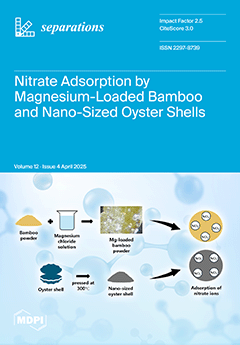The CO
2 injection technology for replacing CH
4 to enhance coalbed methane (CBM) recovery (CO
2-ECBM) offers dual benefits, i.e., reducing CO
2 emissions through sequestration and increasing CBM recovery, thereby leading to economic gains. However, there is no clear consensus
[...] Read more.
The CO
2 injection technology for replacing CH
4 to enhance coalbed methane (CBM) recovery (CO
2-ECBM) offers dual benefits, i.e., reducing CO
2 emissions through sequestration and increasing CBM recovery, thereby leading to economic gains. However, there is no clear consensus on how temperature and pressure affect the competitive adsorption characteristics of CO
2 and CH
4 mixed gases in coal. Therefore, the competitive adsorption behavior of CO
2 and CH
4 mixed gases at various pressures and temperatures were investigated using the breakthrough curve method. Anthracite was selected for the adsorption experiment conducted under three gas injection pressure levels (0.1 MPa, 0.5 MPa, and 1 MPa) and at three temperature levels (20 °C, 40 °C, and 60 °C). This study showed that, when the temperature remained constant and the pressure ranged from 0.1 to 1 MPa, the adsorption rates of CO
2 and CH
4 increased as pressure rose. Additionally, the selectivity coefficient for CO
2/CH
4 decreased with an increase in pressure, suggesting that higher pressures within this range are not conducive to the replacement efficiency of CH
4 by CO
2. As the temperature increased from 20 to 60 °C under constant pressure conditions, both the selectivity coefficients for CO
2/CH
4 and the adsorption rates of CO
2 and CH
4 exhibited a downward trend. These findings imply that, within this temperature range, a reduced temperature improves the ability of CO
2 to efficiently displace CH
4. Moreover, CO
2 exhibits a higher isosteric heat of adsorption compared to CH
4.
Full article





